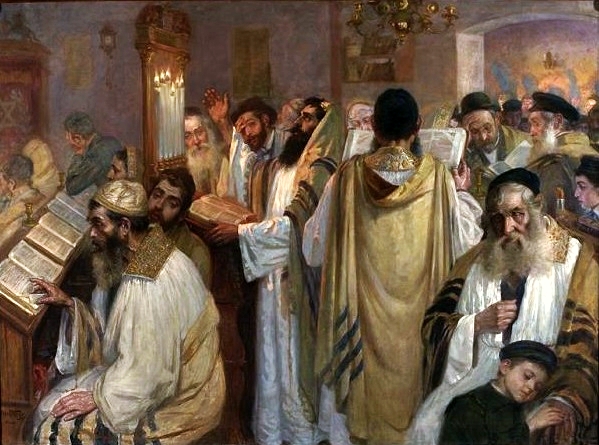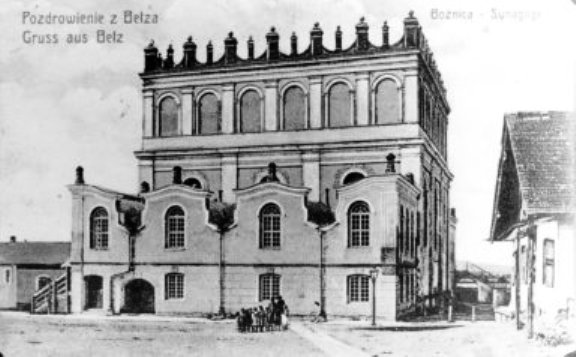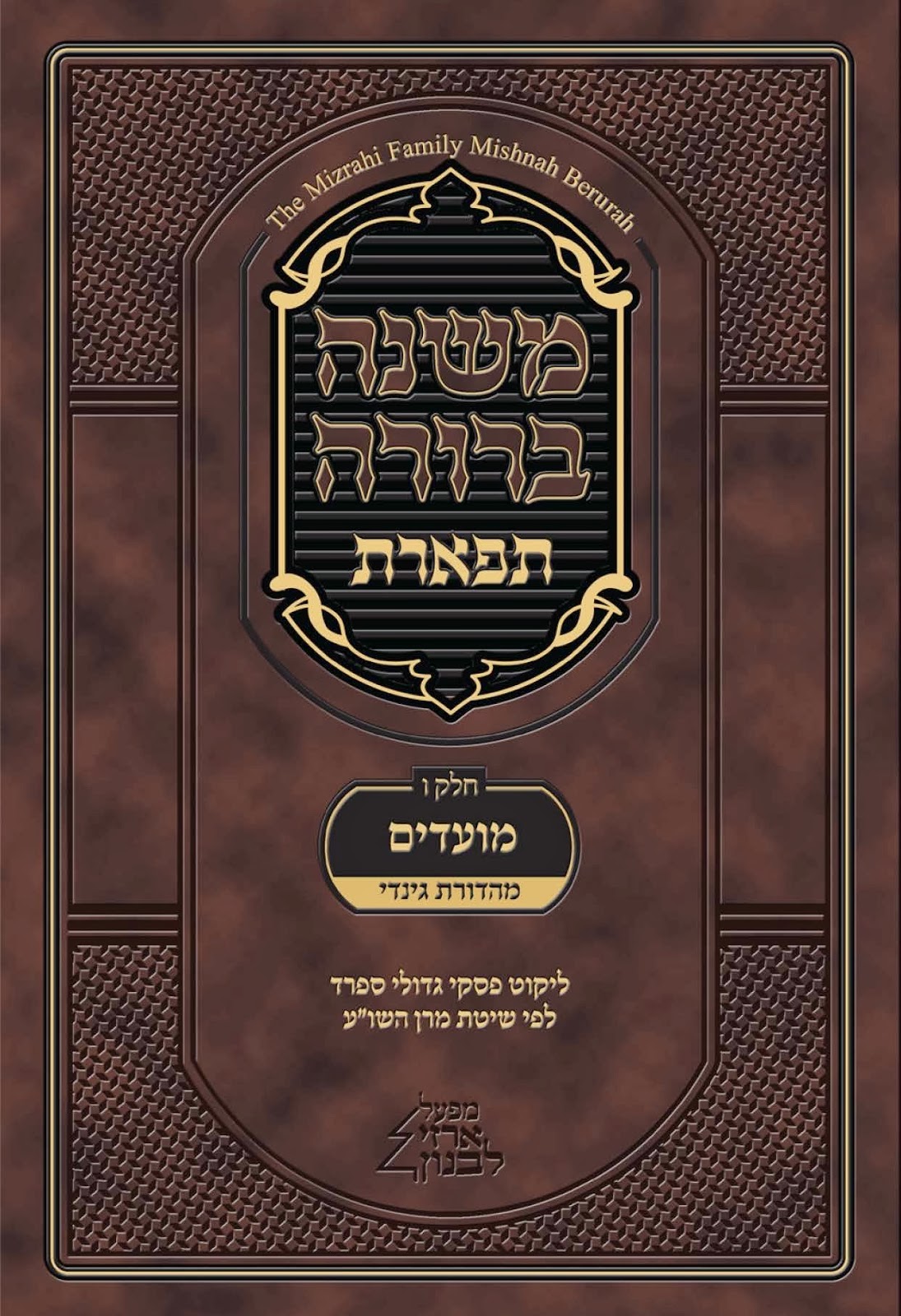|
Gartel
The ''gartel'' is a belt used by Jewish males, predominantly (but not exclusively) Hasidim, during prayer. "Gartel" is Yiddish for "belt". The word comes from the same source as German " Gürtel", which is also cognate with the English "girdle", and "girt". The vast majority of those that wear a Gartel during prayer are Hasidic Orthodox Jews; a smaller number of non-Hasidic Haredim, mostly Lithuanian Jews who emigrated to Jerusalem in the late 18th to early 19th centuries called Perushim. Gartels are generally very modest in appearance. Most are black, but some gartels are white, possibly to be used on some special occasions such as Yom Kippur, and cost more than black counterparts of the same width. Gartels are composed of multiple strings, anywhere from four to over forty in number. Hasidic custom requires that there be a physical divide between the heart and the genitalia during any mention of God's name. It is commonly explained that separating the upper and lower part ... [...More Info...] [...Related Items...] OR: [Wikipedia] [Google] [Baidu] |
Girdle
A belt, especially if a cord or rope, is called a girdle if it is worn as part of Christian liturgical vestments, or in certain historical, literary or sports contexts. Girdles are used to close a cassock in Christian denominations, including the Anglican Communion, Catholic Church, Methodist Church and Lutheran Church. The girdle, in the 8th or 9th century, was said to resemble an ancient Levitical Jewish vestment, and in that era, was not visible. In 800 AD, the girdle began to be worn by Christian deacons in the Eastern Church. The girdle, for men, symbolizes preparation and readiness to serve, and for women, represents chastity and protection; it was also worn by laypersons in the Middle Ages, as attested in literature. For example, the hagiographical account of Saint George and the Dragon mentions the evildoer being tamed with the sign of the cross and a girdle handed to Saint George by a virgin. History The men among the Greeks and Romans wore the girdle upon the loins, ... [...More Info...] [...Related Items...] OR: [Wikipedia] [Google] [Baidu] |
Yom Kippur
Yom Kippur (; he, יוֹם כִּפּוּר, , , ) is the holiest day in Judaism and Samaritanism. It occurs annually on the 10th of Tishrei, the first month of the Hebrew calendar. Primarily centered on atonement and repentance, the day's observances consist of full fasting and ascetic behavior accompanied by intensive prayer as well as sin confessions (traditionally inside of a synagogue). Alongside the related holiday of Rosh HaShanah, Yom Kippur is one of the two components of the "High Holy Days" of Judaism. Etymology () means "day" in Hebrew and () is translated to "atonement". The common English translation of Yom Kippur is Day of Atonement; however, this translation lacks precision. The name Yom Kippur is based on the Torah verse, "...but on the 10th day of the seventh month it is the day of ''kippurim'' unto you..." The literal translation of ''kippurim'' is cleansing. Yom Kippur is a Jewish day to atone for misdeeds and become cleansed and purified from the ... [...More Info...] [...Related Items...] OR: [Wikipedia] [Google] [Baidu] |
Hasidic Clothing
Hasidism, sometimes spelled Chassidism, and also known as Hasidic Judaism (Ashkenazi Hebrew: חסידות ''Ḥăsīdus'', ; originally, "piety"), is a Jewish religious group that arose as a spiritual revival movement in the territory of contemporary Western Ukraine during the 18th century, and spread rapidly throughout Eastern Europe. Today, most affiliates reside in Israel and the United States. Israel Ben Eliezer, the "Baal Shem Tov", is regarded as its founding father, and his disciples developed and disseminated it. Present-day Hasidism is a sub-group within Haredi Judaism and is noted for its religious conservatism and social seclusion. Its members adhere closely both to Orthodox Jewish practice – with the movement's own unique emphases – and the traditions of Eastern European Jews. Many of the latter, including various special styles of dress and the use of the Yiddish language, are nowadays associated almost exclusively with Hasidism. Hasidic thought draws heavily ... [...More Info...] [...Related Items...] OR: [Wikipedia] [Google] [Baidu] |
Arutz Sheva
''Arutz Sheva'' ( he, ערוץ 7, lit=''Channel 7''), also known in English as ''Israel National News'', is an Israeli media network identifying with religious Zionism. It offers online news articles in Hebrew, English, and Russian as well as live streaming radio, video and free podcasts. It also publishes a weekly newspaper, ''B'Sheva'', with the third-largest weekend circulation in the country. History In the 1970s an offshore radio station Voice of Peace was launched, broadcasting pacifistic messages. In response, Rabbi Zalman Baruch Melamed launched radio station ''Arutz Sheva'' in 1988, aimed at Israelis opposed to negotiations with the Palestine Liberation Organization. Based in Beit El, the station generated its broadcast on the Israeli airwaves from the ship MV ''Eretz HaTzvi'' in the Mediterranean Sea. It was one of the first Internet radio stations and was used as a beta tester for RealPlayer. From 1996 to 2002, ''Arutz Sheva'' broadcast in Russian. In 2003, ''Arutz S ... [...More Info...] [...Related Items...] OR: [Wikipedia] [Google] [Baidu] |
Mitzvah Tantz
''Mitzvah tantz'' (lit. " mitzvah-dance" in Yiddish) is the Hasidic custom of the men dancing before the bride on the wedding night, after the wedding feast. Commonly, the bride, who usually stands perfectly still at one end of the room, will hold one end of a long sash or a gartel while the one dancing before her holds the other end. There are times when one of the leading rabbis, usually her father or grandfather, will dance with her as well. The dance is usually a highly charged emotional moment, wherein the dancer prays silently for the couple's success in life. Background The custom evidently predates Hasidism, being mentioned first in the medieval '' Machzor Vitri'', and has its basis in the Talmud (Ketubot), where there is an expression ''ketsad merakdim lifnei hakallah'' "how does one dance before the bride?" Although most Orthodox groups do not observe this practice, Hasidim have maintained a form of this ancient custom and consider a great honor to be able to dance in f ... [...More Info...] [...Related Items...] OR: [Wikipedia] [Google] [Baidu] |
Belz (Hasidic Dynasty)
Belz ( yi, בעלזא) is a Hasidic dynasty founded in the town of Belz in Western Ukraine, near the Polish border, historically the Crown of the Kingdom of Poland. The group was founded in the early 19th century by Rabbi Shalom Rokeach, also known as the ''Sar Shalom'', and led by his son, Rabbi Yehoshua Rokeach, and grandson, Rabbi Yissachar Dov, and great-grandson, Rabbi Aharon, before the Nazi invasion of Poland in 1939. While Rabbi Aharon managed to escape Europe, together with his brother Rabbi Mordechai Rokeach, most of the Belz Hasidim were murdered in the Holocaust. Rabbi Aharon re-established the Hasidic community in Israel following World War II. At present Belz has sizable communities in Israel, Western Europe, and the Anglosphere. History The founder of the dynasty was Rabbi Shalom Rokeach, also known as the ''Sar Shalom'', who was inducted as rabbi of Belz in 1817. He personally helped build the city's large and imposing synagogue. Dedicated in 1843, the buildin ... [...More Info...] [...Related Items...] OR: [Wikipedia] [Google] [Baidu] |
Skver (Hasidic Dynasty)
Skver (also Skvir, Skvere, or Skwere; yi, סקווירא) is the name of a Hasidic dynasty founded by Rebbe Yitzchok Twersky in the city of Skver (as known in Yiddish; or Skvyra, in present-day Ukraine) during the mid-19th century. Followers of the rebbes of Skver are called ''Skverer Hasidim''. The dynasty of Skver is a branch of the Chernobyl dynasty. Its founder, Rebbe Yitzchok, also known as Reb Itzikl, was one of the eight sons of Rabbi Mordechai, the Maggid of Chernobyl. There are three offshoots of the Skverer dynasty. David Twersky is the rebbe of one headquartered in New Square, New York. Yechiel Michl Twersky, son of the late rebbe David Twersky, is the rebbe of another. Yitzcok Twersky, son of the late rebbe Mottel Twersky is the rebbe of a third. Philosophy and lifestyle Skverer Hasidism stresses Torah study, prayer, and abstention from excessive earthly pleasures, in order to achieve purity of heart and mind. To that end, the village of New Square was establis ... [...More Info...] [...Related Items...] OR: [Wikipedia] [Google] [Baidu] |
Mishnah Berurah
The ''Mishnah Berurah'' ( he, משנה ברורה "Clear Teaching") is a work of ''halakha'' (Jewish law) by Rabbi Yisrael Meir Kagan (Poland, 1838–1933, also known as ''Chofetz Chaim''). It is a commentary on ''Orach Chayim'', the first section of the ''Shulchan Aruch'' which deals with laws of prayer, synagogue, Shabbat and holidays, summarizing the opinions of the ''Acharonim'' (post-Medieval rabbinic authorities) on that work. The title comes from b. Shabbat 139a, "They will rove, seeking the word of the LORD, but they will not find it (Amos 8:12) -- they will not find clear teaching and clear law in one place." Contents The ''Mishnah Berurah'' is traditionally printed in 6 volumes alongside selected other commentaries. The work provides simple and contemporary explanatory remarks and citations to daily aspects of ''halakha''. It is widely used as a reference and has mostly supplanted the Chayei Adam and the Aruch HaShulchan as the primary authority on Jewish daily living am ... [...More Info...] [...Related Items...] OR: [Wikipedia] [Google] [Baidu] |
Shulchan Aruch
The ''Shulchan Aruch'' ( he, שֻׁלְחָן עָרוּך , literally: "Set Table"), sometimes dubbed in English as the Code of Jewish Law, is the most widely consulted of the various legal codes in Judaism. It was authored in Safed (today in Israel) by Joseph Karo in 1563 and published in Venice two years later. Together with its commentaries, it is the most widely accepted compilation of Jewish law ever written. The ''halachic'' rulings in the ''Shulchan Aruch'' generally follow Sephardic law and customs, whereas Ashkenazi Jews generally follow the halachic rulings of Moses Isserles, whose glosses to the ''Shulchan Aruch'' note where the Sephardic and Ashkenazi customs differ. These glosses are widely referred to as the ''mappah'' (literally: the "tablecloth") to the ''Shulchan Aruch's'' "Set Table". Almost all published editions of the ''Shulchan Aruch'' include this gloss, and the term "Shulchan Aruch" has come to denote ''both'' Karo's work as well as Isserles', with Karo ... [...More Info...] [...Related Items...] OR: [Wikipedia] [Google] [Baidu] |
Book Of Amos
The Book of Amos is the third of the Twelve Minor Prophets in the Old Testament (Tanakh) and the second in the Greek Septuagint tradition. Amos, an older contemporary of Hosea and Isaiah, Harris, Stephen L., ''Understanding the Bible''. Palo Alto: Mayfield. 1985. was active c. 750 BC during the reign of Jeroboam II (788–747 BC) of Samaria (aka. Northern Israel), making Amos the first prophetic book of the Bible to be written. Amos lived in the kingdom of Judah but preached in the northern kingdom of Israel. His major themes of social justice, God's omnipotence, and divine judgment became staples of prophecy. Structure According to Michael D. Coogan, the structure of Amos is as follows: *Oracles against the nations (1:3–2:6) *Oracle concerning prophecy (3:3-8) *Addresses to groups in Israel **Women of Samaria (4:1–3) **Rich people in Samaria (6:1–7) **Rich people in Jerusalem (8:4–8) *Five visions of God's judgment on Israel, interrupted by a confrontation between Amos ... [...More Info...] [...Related Items...] OR: [Wikipedia] [Google] [Baidu] |
Genitalia
A sex organ (or reproductive organ) is any part of an animal or plant that is involved in sexual reproduction. The reproductive organs together constitute the reproductive system. In animals, the testis in the male, and the ovary in the female, are called the ''primary sex organs''. All others are called ''secondary sex organs'', divided between the external sex organs—the genitals or external genitalia, visible at birth in both sexes—and the internal sex organs. Mosses, ferns, and some similar plants have gametangia for reproductive organs, which are part of the gametophyte. The flowers of flowering plants produce pollen and egg cells, but the sex organs themselves are inside the gametophytes within the pollen and the ovule. Coniferous plants likewise produce their sexually reproductive structures within the gametophytes contained within the cones and pollen. The cones and pollen are not themselves sexual organs. Terminology The ''primary sex organs'' are the gonads, a p ... [...More Info...] [...Related Items...] OR: [Wikipedia] [Google] [Baidu] |




.jpg)




